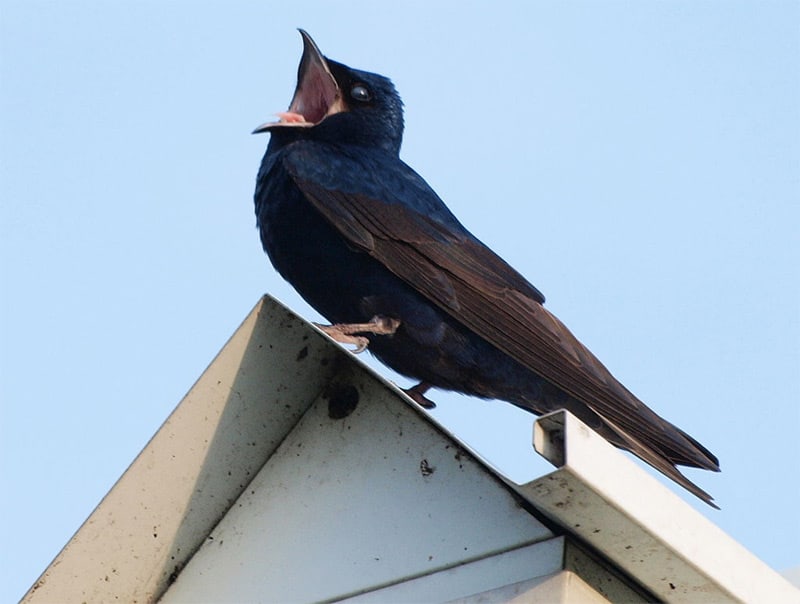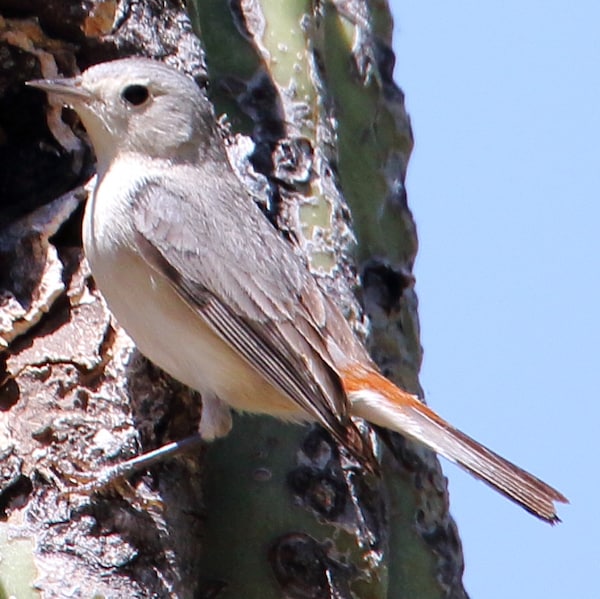Look for
Our largest swallow (at 8 inches), the purple martin is a graceful flyer with a bubbly, liquid song. The adult male has a deep blue body and black wings and tail. Females and youngsters are gray and black with some blue on the back. In flight, martins can be confused with European starlings, but martins have a notched tail and call out almost constantly.
Listen for
Both male and female Purple Martins sing. Main vocalization is a liquid, warbling chortle given in a series of down-slurred notes: teer, teeer, teer, jeer-deert, teer! Males perform a predawn song display in spring, flying high over their nesting colony, hoping to attract females and other martins.
Find it
No other North American bird has a closer association with humans than the purple martin. For more than four hundred years, martins in eastern North America have nested in human-supplied housing, at first in hollow gourds offered by Native Americans and today in a variety of specialized housing.
Generations of people and martins have grown up together. Even non-bird watchers can appreciate this friendly and familiar bird. Purple martins breed across eastern North America, except for the extreme north.
They spend winters in South America but return to the southern United States in mid-January, their arrival eagerly anticipated by their human landlords. Because of their reliance on human- supplied housing, most martins are found around cities, towns, and settlements.
Feed it
Martins eat flying insects almost exclusively, but—contrary to popular opinion and marketing hype—martins do not eat many mosquitoes. Instead, their diet includes larger flying insects, such as beetles, flies, dragonflies, wasps, butterflies, and moths.
In cold, rainy weather, martin landlords often resort to feeding them mealworms and bits of scrambled egg in an effort to keep their beloved birds alive. Some landlords even shoot mealworms into the air with a slingshot just so the martins can catch their food.
Nesting Behavior
Martins are rather selective in choosing colony nest sites, but one thing is certain: They like to be with other martins. Research has revealed that they prefer white housing with a large (8x8x8-inch) interior and an 1 ½-inch entry hole. The housing should be mounted near a human dwelling in an open area.
Martins build a loose cup nest inside the cavity out of pine needles and grass, lined with green leaves (which limit parasites). The female lays four to six eggs and does most of the incubation, lasting about 16 days. Both parents feed the nestlings for the month-long period before fledging.
WOW!
Hundreds of years ago Native Americans placed hollowed-out gourds on poles for the martins to use. The martins returned the favor by controlling flies and wasps around the village.





Just got my “Purple Martin” Scouts today 2 February 2018 in Enterprise, Alabama and I got 36 Gourds 12 on each pole and 1- 12 room house, my biggest problem is the “Sparrows” try to take over and build nest in the Gourds PERIOD !!!